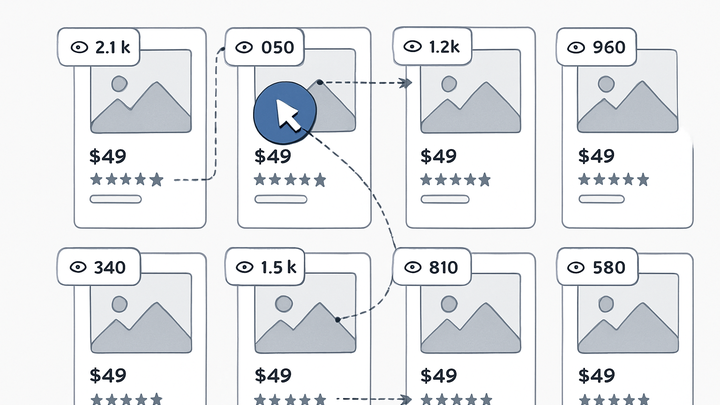Published on 2025-06-27T22:49:11Z
What is a Product Listing Page (PLP)? Examples and Tracking
A Product Listing Page (PLP) is a type of e-commerce webpage that presents multiple products in a structured list or grid, often filtered by category, search terms, or promotional criteria. PLPs serve as a browsing entry point, helping users compare options and narrow their selection before viewing individual product detail pages (PDPs). From an analytics perspective, tracking interactions on PLPs—such as impressions, clicks, filter usage, and pagination—provides insights into user behavior, product popularity, and list effectiveness. Proper implementation of PLP tracking informs merchandising strategies, UX improvements, and conversion optimization.
Common PLP features include:
- Product grids or lists
- Filter and sort controls
- Pagination or infinite scrolling
In the following sections, we’ll define PLPs, explain why they matter, and demonstrate how to implement tracking with GA4 and PlainSignal.
Product listing page (plp)
Best practices for tracking and analyzing e-commerce Product Listing Pages (PLPs) using GA4 and PlainSignal.
What is a Product Listing Page (PLP)?
This section defines a PLP and outlines its role in e-commerce analytics and user journeys.
-
Definition
A PLP is a webpage that displays multiple products as a list or grid, allowing users to browse and compare items before visiting individual product pages.
-
Key components
Typical PLP elements include category headers, filter and sort controls, product thumbnails, and pagination or infinite scroll.
Why Track PLPs in Analytics?
Discusses the importance of measuring user interactions on PLPs to optimize layout and drive conversions.
-
User engagement
Monitoring how users interact with filters, sorting options, and pagination helps uncover browsing patterns and friction points.
-
Filter usage
Tracks the frequency and type of filters applied by users.
-
Sort interactions
Captures which sorting options are selected and how often.
-
-
Product performance insights
Analyzing which products receive the most impressions and clicks can guide merchandising and promotional strategies.
Implementing PLP Tracking
Step-by-step guide to setting up PLP tracking in popular analytics platforms like GA4 and PlainSignal.
-
GA4 setup
Use Google Analytics 4’s e-commerce event
view_item_listto track product impressions and list context.-
Gtag.js snippet
Call
gtag('event', 'view_item_list', { items: [...] });passing the product array andlist_namefor context. -
Data layer approach
Push e-commerce data to the
dataLayerand use Google Tag Manager to trigger theview_item_listevent.
-
-
PlainSignal setup
Leverage PlainSignal’s cookie-free analytics to capture PLP impressions and interactions with a lightweight script.
-
Initialization snippet
Include the following snippet in your HTML
<head>to load PlainSignal:<link rel="preconnect" href="//eu.plainsignal.com/" crossorigin /> <script defer data-do="yourwebsitedomain.com" data-id="0GQV1xmtzQQ" data-api="//eu.plainsignal.com" src="//cdn.plainsignal.com/plainsignal-min.js"></script> -
Tracking event
After initialization, call
PlainSignal('track', 'view_item_list', { items: [...] });to send product impression data.
-
Key Metrics for PLP Analysis
Overview of essential metrics to monitor the performance and effectiveness of product listing pages.
-
Product impressions
Total count of times products are displayed to users on the PLP.
-
Click-through rate (ctr)
Percentage of product impressions that resulted in clicks, calculated as (clicks / impressions) × 100.
-
List position performance
Analyzes CTR by product position to optimize item placement and layout.
-
Pagination and scroll depth
Tracks how far users navigate through pages or a continuous list to inform pagination or infinite scroll strategies.
